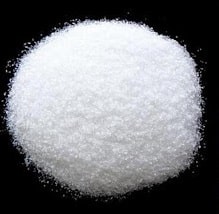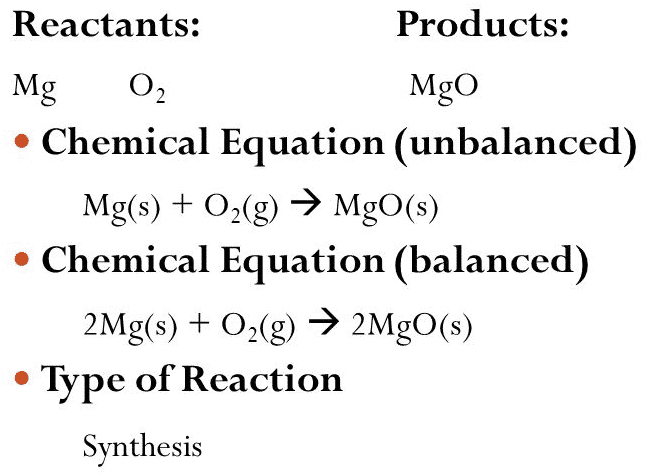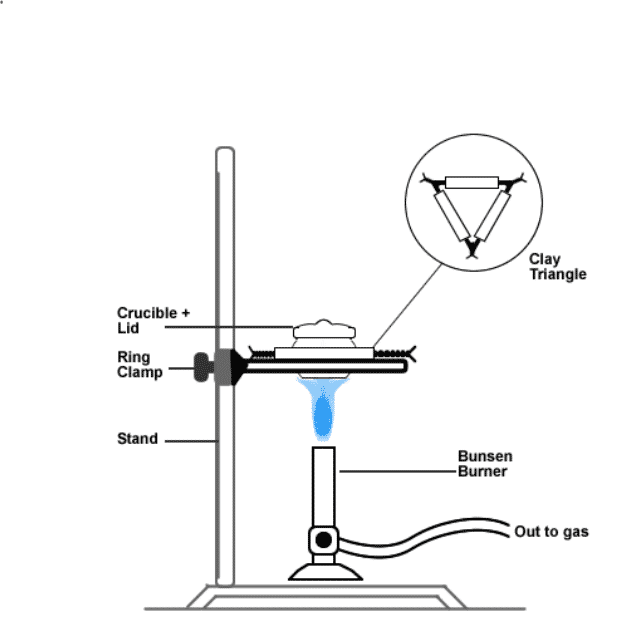
This is a laboratory report which examines the oxidation of Magnesium and its percent yield. It is a very common lab report assignment for high school students across North America and the UK. The report will look to understand the percent yield of Magnesium Oxide (MgO) after heating varying amounts of Magnesium via a conventional Bunsen Burner or Ceramic hot plate.
The Magnesium ribbon will be heated a fix rate in a ceramic crucible to it form its byproduct: MgO via oxidation/ synthesis. The amount of MgO formed will be dependent on the amount of Magnesium ribbon used, along with avoidance of human error (i.e incorrect weighing or loss of experimental product).
See Balanced equation:

LABORATORY PROTOCOL:
This lab can be performed as an individual or with a partner (Recommended for Grade 10 and above)
- Obtain the following items: Clamp stand, Bunsen burner/ Hot plate, ceramic tile hot plate, ceramic crucible with its accompanying lid, Tongs, Protective eye ware and gloves.
- Begin by weighing the ceramic crucible with its accompanying lid; record the value.
- Obtain approximately 20-25cm of Magnesium ribbon provided to you. Weight it and record the value.
- Place the Magnesium ribbon into the ceramic crucible with the lid on. Weight it and record the value.
- Place the ceramic crucible containing the Magnesium ribbon above the Bunsen burner (see image below).
- Cover the crucible and heat strongly for approximately 5-10 minutes.
- Turn off the Bunsen burner and when safely cooled, weight the entire ceramic crucible containing the Magnesium with the lid on; record the value .

LAB DATA
| Data | Trial #1 | Trial #2 |
| Weight of empty crucible + crucible lid (grams) | 26.698 g | 26.687 g |
| Weight of Mg metal + crucible + crucible lid (grams) | 27.060 g | 27.046 g |
| Weight of Magnesium oxide + crucible + crucible lid (grams) | 27.291 g | 27.273 g |
LAB CALCULATION
Mass of magnesium metal. [This will be calculated via direct measurement and subtracting the weight of the empty crucible + lid]
- Trial 1: .362 g
- Trial 2: .359 g
Actual yield of magnesium oxide [This will be calculated via direct measurement and subtracting the weight of the empty crucible + lid]
- Trial 1: .593 g
- Trial 2: .586 g
Theoretical yield of Magnesium oxide [This will done by taking the weight of your magnesium ribbon and converting it to Moles and solving via the Molar ratio. For help doing this, please see the video or the example calculation below.]

- Trial 1: .6 g
- Trial 2: .596 g
Percent yield of magnesium oxide [This is calculated via %yield = (actual yield/theoretical yield) x 100]
- Trial 1: 98.8%
- Trial 2: 98.3%
Average percent yield of magnesium oxide [This will be done by averaging the % yield of your 2-3 trials]
- 98.55%
STUDENT LAB DISCUSSION
Magnesium (Mg) is weighed in a crucible and then heated to create a reaction with O₂ to produce Magnesium Oxide (MgO). This is an oxidation reaction because the Magnesium gained Oxygen and oxidized to create MgO. The reason that the product had a higher mass than the reactant is because Mg bonded to O to form MgO, so the product had a higher mass because of the gain of an O atom.
This relates to the law of conservation of matter which states that matter is not destroyed or created from nothing, however it can convert from one form to another. Of note, some experimental protocols instruct students to reheat the crucible and Magnesium ribbon several times and re-measure the weight each time (continuing until the final mass value is repeatedly constant).
By doing this repeated heating and measurement until a constant value is obtained would ensure all of the Mg ribbon had be oxidized to MgO therefore ensuring max percent yield.

This was super helpful. Thank you!
Thank you
Thank you so much!
Thank you very much